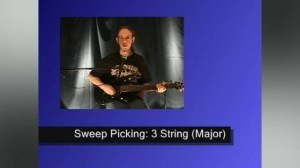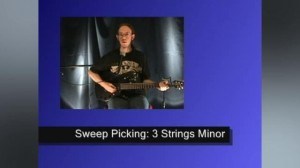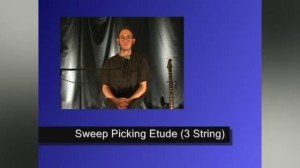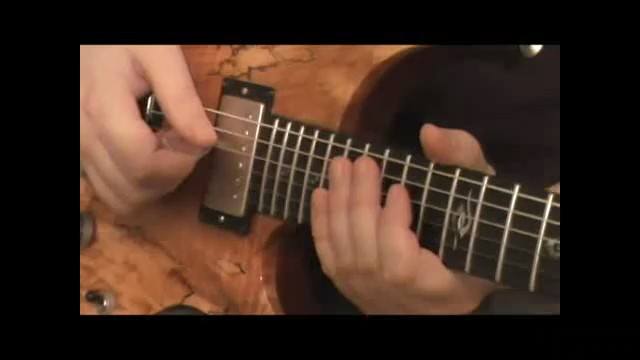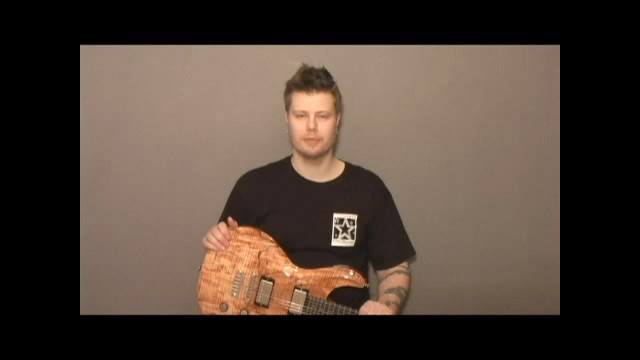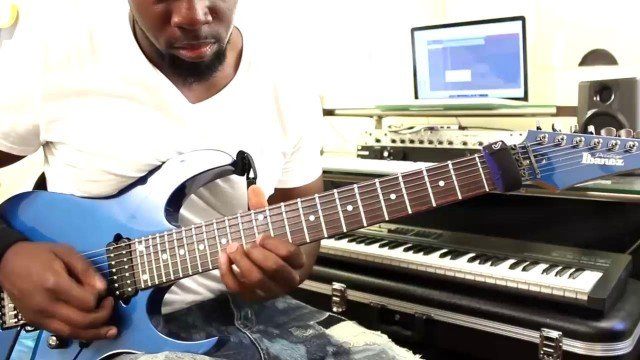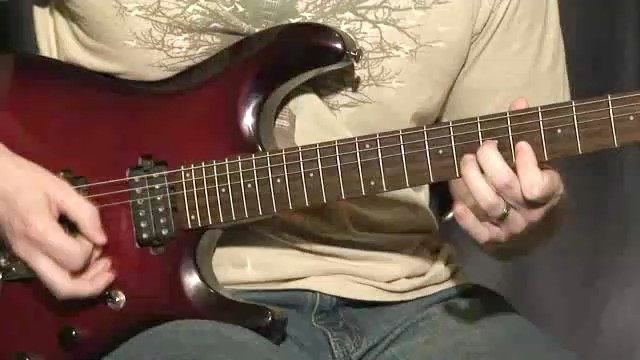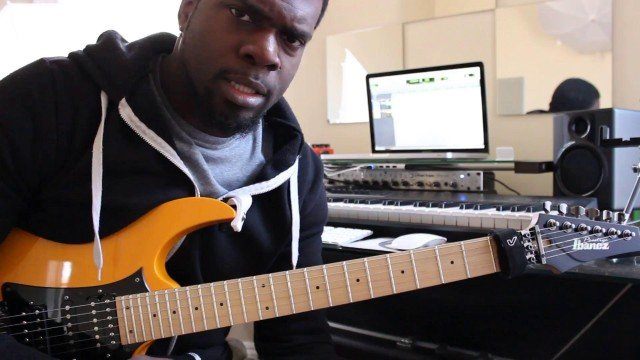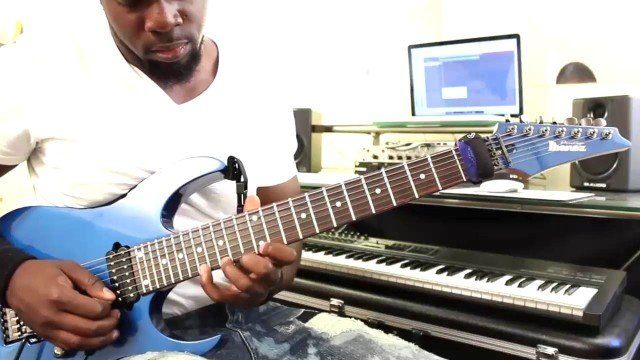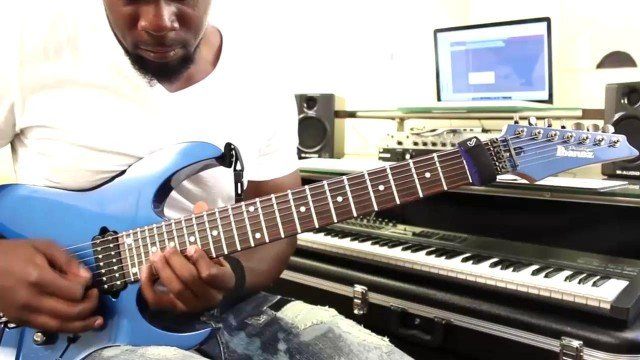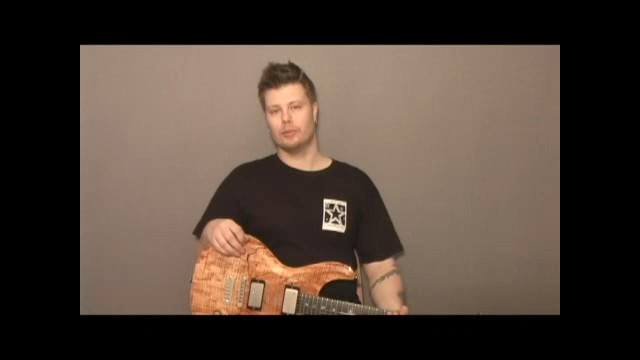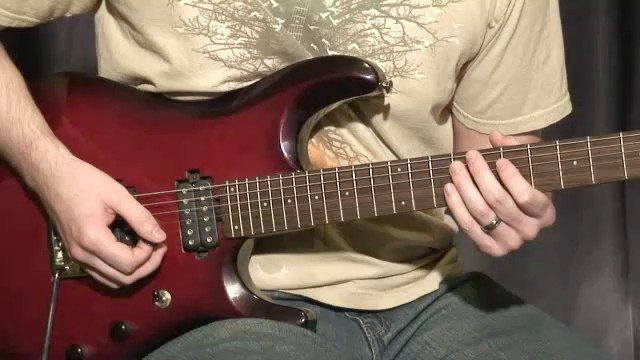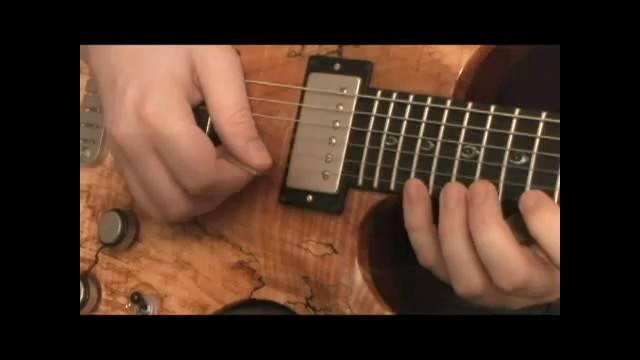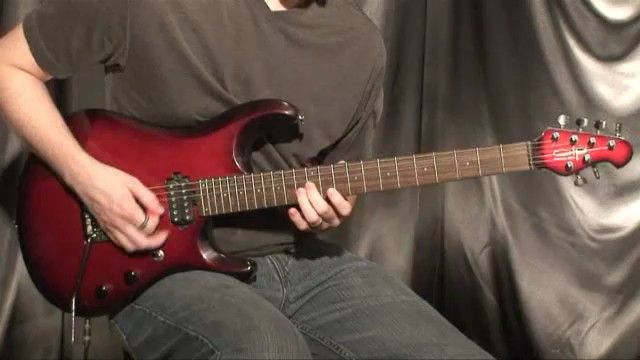Welcome to part 2 of this tutorial on sweep picking. Before, we learned the 3 types of 3 string major arpeggios, so now we are going to focus on the 3 types of minor arpeggios.
Now, if you know anything about chords, you will know that a minor triad is formed when you take a major triad and lower the 3rd one half step. So in essence, all of these arpeggios are going to be the same thing as the major ones we learned before, but we are going to alter one note to make it a minor arpeggio.
The first one we are going to learn is a minor second inversion arpeggio, which goes like this: 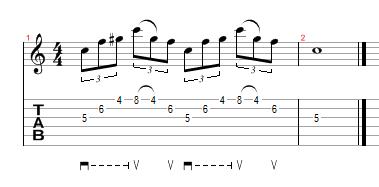
This little exercise is going to combine the 2nd inversion major and minor arpeggios going through the harmonized D major scale. Don't worry about getting this down fast, just make sure the notes are played cleanly and accurately. (note: there is an arpeggio at the end that we didn't go through but don't worry about that one for now.)
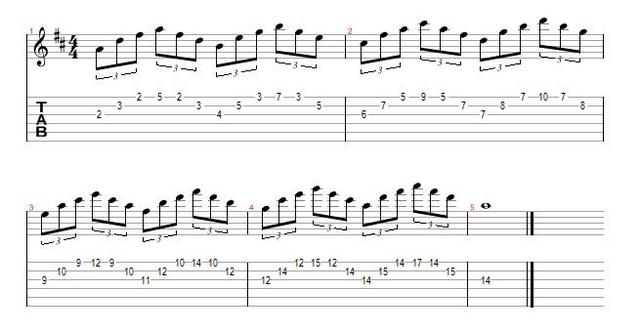
The next arpeggio we will learn is the Minor Root Position arpeggio, which goes like this:
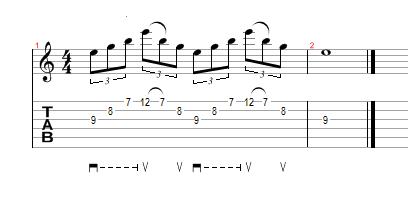
And the last minor arpeggio we are going to learn is the first inversion minor arpeggio, which goes like this.
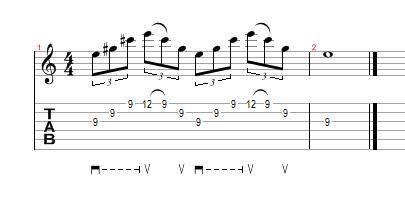
This arpeggio is especially tricky to play because of the bar on the 9th fret across the top 3 strings. In order to make the "rolling" technique on this one work, you'll need to fret the G string note with the tip of your finger, using the fleshy underside of the finger to fret the B and E string notes. To execute the first roll, pick the G string. Then, as you go to pick the B string, arch the first knuckle of your barring finger and roll the finger in the direction of the sweep so that the tip of the finger mutes the G string. As you pick the E string, continue rolling the finger to mute the B string. If this is done the right way, the notes will sound separate and distinct. When performing the descending (upstroke) sweeps, roll your barring finger in the opposite direction.
A good exercise to practice if you are having trouble with this arpeggio is this: 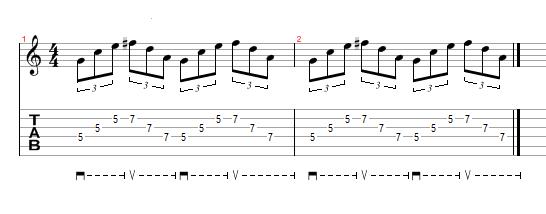
When you get that exercise mastered, try playing the arpeggio again and be sure to move this all over the fretboard.
In the next lesson, I am going to show you some real life musical applications for these arpeggios and how to use them in your own solos.

